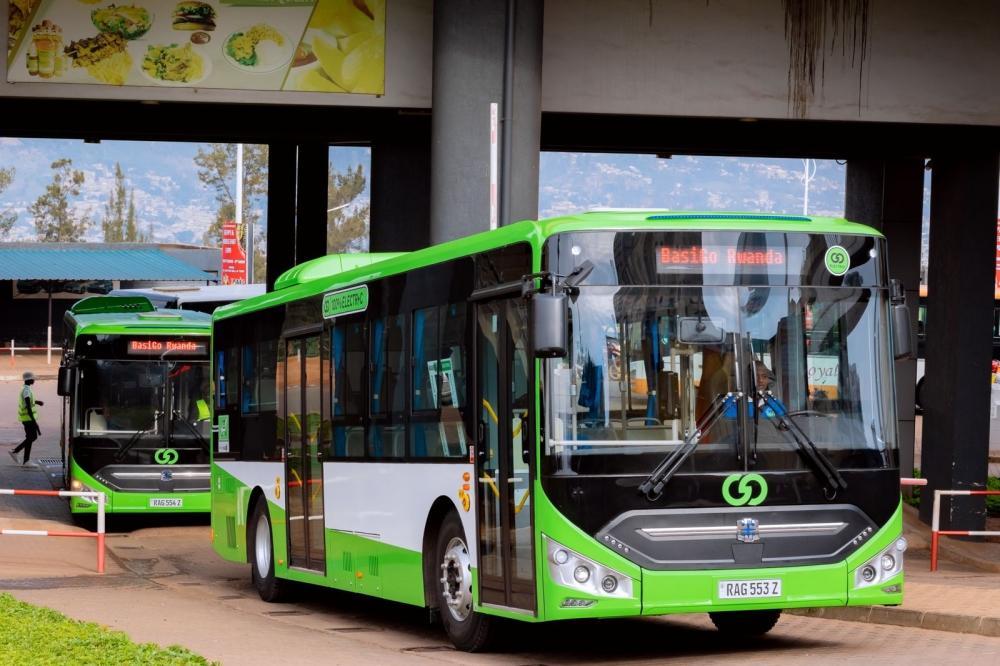Africa-Press – Rwanda. The government’s ambition to electrify 20 percent of its bus fleet by 2030 will require significant investment in power infrastructure, clear policy frameworks, and innovative financing mechanisms, according to a new World Bank report released on Wednesday, October 1.
The study, Exploring Enabling Energy Frameworks for Electric Mobility in Rwanda, was prepared under the Rwanda Urban Mobility Improvement Project (RUMI). It assesses electricity demand, charging infrastructure, and regulatory frameworks, while offering a roadmap for coordinated progress in energy and transport.
The government has pledged to electrify a fifth of its buses within the next five years, building on early initiatives in Kigali where private operators have deployed e-buses and charging stations. Most chargers currently in use are rated between 120 kW and 160 kW, supporting overnight charging for 5–20 buses per site.
“Electric mobility is not only about cleaner buses. It is about building the foundations of a modern economy powered by sustainable energy. The World Bank is proud to support Rwanda as it aligns its energy and transport systems to meet its development goals,” said Sahr Kpundeh, World Bank Country Manager for Rwanda.
Pressure on the grid
The report cautions that electric mobility could place additional strain on Rwanda’s grid if expansion is not carefully managed.
“Kigali’s peak power demand is projected to increase by 64 percent by 2030, even without electric vehicles. The addition of e-mobility will further strain the system, and without upgrades, the number of overloaded lines could be four times higher by 2030,” it states.
Smart charging is highlighted as a key solution, with potential to ease stress on distribution networks by up to 15 percent if charging is shifted to off-peak hours and aligned with solar power.
“Our analysis shows Rwanda can achieve its goals if smart charging, cost-reflective tariffs, and integrated planning are prioritised,” said Tarek Keskes, World Bank energy specialist.
The report recommends creating a unified roadmap, establishing a sustainable transport working group, integrating EV charging into electricity pricing models, and mandating EV-ready infrastructure in new developments.
Nyabugogo hub: a pilot case
A strategic priority is the transformation of the Nyabugogo multi-modal transit hub. Planned upgrades include 18 chargers, an 800 kW solar PV system, and 470 kWh battery storage, at an estimated cost of $7.7 million.
The hub’s expected 2,160 kW peak demand will require two 1,250 kVA transformers. Charging options under review range from 120 kW high-power chargers for rapid top-ups during busy hours to slower overnight systems.
Other hubs under consideration include Kigali’s CBD, Remera, Kimironko, Nyanza, and Kabuga—sites chosen for strong grid connections and limited need for costly upgrades.
Policy, financing, and waste management
The report stresses the need for strong policy and financing frameworks, including blended finance, public-private partnerships, grants, and green bonds. It also calls for regulations on battery waste and an Extended Producer Responsibility scheme to ensure safe recycling.
“The Government of Rwanda is committed to accelerating the transition to electric mobility as part of our climate and development agenda,” said Jimmy Gasore, Minister of Infrastructure.
MININFRA has already drafted a national master plan for EV charging stations, ensuring that no vehicle travels more than 50 kilometres without access to a charger.
A geospatial analysis identified more than 224 potential sites nationwide, with efforts underway to attract private investment—particularly in high-density urban areas and at existing petrol stations and commercial centres.
Rwanda is also exploring second-life uses for EV batteries and the potential of Vehicle-to-Grid (V2G) technology, which would allow e-buses to serve as mobile energy storage and provide backup power when needed.
For More News And Analysis About Rwanda Follow Africa-Press






